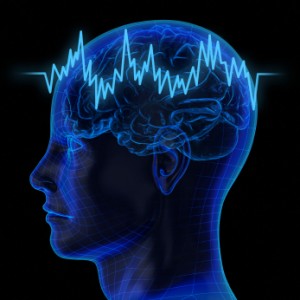Synthetic Marijuana Comes with Serious Risks, Including Risks to Fetus
Synthetic marijuana, otherwise known as spice, skank, or K2, is not only vastly more potent than the tetrahydrocannabinol (THC) in marijuana plants, but it also lacks cannabidiol (CBD), the calming, antipsychotic substance also present in the plants. This makes spice much more likely to induce major psychiatric effects.
New evidence links use of spice during pregnancy to a tragic birth defect, anencephaly, or absence of the cerebral cortex. It can also lead to the later development of attention-deficit hyperactivity disorder, learning disabilities, memory impairment, depression, and aggression.
of spice during pregnancy to a tragic birth defect, anencephaly, or absence of the cerebral cortex. It can also lead to the later development of attention-deficit hyperactivity disorder, learning disabilities, memory impairment, depression, and aggression.
Effects of THC on gestation may occur as early as two weeks after conception, meaning by the time a woman realizes she is pregnant, the fetus may have been harmed by exposure to the drug.
Other new finding associate use of spice with acute coronary syndrome and the kind of acute kidney injury that can lead to the organ shutting down.
Editor’s Note: It has now been found that synthetic marijuana, or spice, can lead to psychosis, delirium, acute coronary syndrome (heart attack) in young people, and now kidney dysfunction, in addition to causing birth defects if used by pregnant women. Not only is spice made up of more potent THC without the calming effects of CBD, but it is often laced with unknown contaminants, which are likely the cause of the heart and kidney damage.
Smoking regular marijuana is bad enough—it doubles the risk of psychosis and may precipitate the onset of schizophrenia. It may also cause long-lasting effects on cognitive function. Since many states are legalizing marijuana, it is important to know the risks. In any case the risks are much more serious with the synthetic product, and synthetic marijuana should be avoided at all costs.
An Animal Model of Poor Judgment in Adolescence: Previous Learning Suppressed
As young mice transition into adolescence, they experience a “sensitive” period in which their context-based fear memories are temporarily suppressed. In a recent study, young animals learned to avoid an environment associated with a mild shock. Later, when they entered adolescence, this learning was temporarily forgotten or suppressed. However, when the same mice aged into adulthood, they reacquired this learned fear memory and began to again avoid the environment associated with the earlier shock. This temporary loss of fear memory differs in mice depending on their genes.
At the 2012 meeting of the Society of Biological Psychiatry, researcher Francis S. Lee reported that mice with a certain genetic variation display an impairment of this fear memory process. There are several common variants of the gene responsible for the production of brain-derived neurotrophic factor (BDNF), which protects neurons and is necessary for long-term memory. Mice with the poorer functioning variant known as Val66Met (as opposed to the better functioning Val66Val) fail to recall the earlier fear-related events not only in adolescence, but also in adulthood when the fear memory is usually retrievable again.
Editor’s Note: In mice and humans, Val66Val is the most frequently occurring allele in the population, but Val66Met is also a fairly common variation of the BDNF gene. It is this Val66Met allele that is associated with not retaining earlier learned experience about a “dangerous” environment that should be avoided.
These data suggest an intriguing explanation for some of the “wild” behavior and poor judgment to which even the smartest adolescents are prone. This kind of behavior may be based in part on the temporary forgetting in adolescence of earlier learning about which situations or environments are safe versus which ones are dangerous. Read more
Using the Memory Reconsolidation Window to Extinguish Drug Craving and Use
In last week’s article we discussed how fearful memories can be changed during the window in which they are reconsolidated (5 minutes to 1 hour after active recall of the long-term memory). Now the memory reconsolidation window has been used in animals and people to extinguish an addiction to cocaine or heroin. The results in humans were reported by Xue et al. in the journal Science in April 2012.
In a typical recovery scenario, a cocaine addict is repeatedly presented cocaine cues (such as paraphernalia) without the delivery of cocaine, and craving for cocaine becomes extinguished. While the patient stops craving the drug, some biological signs of the addiction remain, such as autonomic hyper-reactivity (e.g. changes in skin conductance, pulse, or blood pressure) in response to the cocaine cues. When the sober cocaine addict leaves the recovery program, he may believe he is no longer subject to cocaine craving even upon the sight of cocaine-related cues, but this craving can return spontaneously or be reactivated by cocaine-related environments or friends who were also users, and he typically relapses.
In order to make the extinction learning more powerful, it must be experienced during the reconsolidation window. In the animal experiments by Xue et al., rodents were trained to press a lever to receive an injection of cocaine or heroin. In the extinction process, the animals were returned for 15 minutes to the same environment where they had learned to press the lever and receive the drug. This was meant to activate memories associated with the drug. Then, after a 10-minute waiting period, a 180-minute extinction training was given. The process was repeated daily for 14 days and resulted in almost complete absence of relapse to drug use with passage of time (spontaneous recovery), exposure to the drug (reinstatement), or exposure to the drug-associated environment (renewal). Moreover, the expected changes in heart rate and blood pressure upon re-exposure to the drug cues were also fully extinguished. Extinction training that began one hour after activation of the memory was also successful.
When the same extinction training was given 6 hours after placing the animal in the drug administration environment, the animal remained prone to drug re-instatement and relapse in the same or different environments or spontaneously. It can be presumed that this occurred because the extinction training took place after the reconsolidation window had closed.
These well-controlled data with both cocaine and heroin self-administration in animals were then taken to the clinic to test their validity in humans.
The same procedure worked in humans addicted to heroin. Two consecutive days of sixty-minute extinction learning within the reconsolidation window, i.e. starting 10 minutes after a 5-minute retrieval of drug-associated memories by watching a video resulted in amelioration of drug craving for at least 184 days, and amazingly, as in the animals, also resulted in the loss of the unconscious biological reactivity in heart rate and to a lesser extent, blood pressure. Patients did not relapse during 6 months of followup. The same extinction process was unsuccessful when it occurred outside of the reconsolidation window, i.e. 6 hours after retrieving the drug-related memories.
Editor’s Note: These results could be of considerable potential therapeutic value in a variety of psychiatric illnesses. This process is conceptual breakthrough that has great promise for clinical use. Psychiatrists, psychologists, and patients should become familiar with these data and the principles of exploiting the reconsolidation window for potentially transformational results.
How quickly these principles can be incorporated into mainstream psychotherapeutic encounters remains to be seen. However, clinicians should begin to familiarize themselves with these data and concepts so that they can soon be put to use for more effective clinical treatment of psychiatric conditions involving pathological learning, conditioning, and habits.
Opening The Reconsolidation Window to Extinguish Fear Memories: A New Conceptual Approach to Psychotherapeutics
 Memory processes occur in several phases. Short-term memory is converted to long-term memory by a process of consolidation that requires the synthesis of new proteins. Transcription factors in the nuclei of hundreds of millions of nerve cells are activated so that specific synapses can be modified for the long term. If protein synthesis is inhibited during a period within a few hours after new learning has occurred, what was learned never gets consolidated and is essentially forgotten. It is thought that this phase of consolidation happens when a memory trace moves from short-term storage in the hippocampus to long-term storage in the cerebral cortex.
Memory processes occur in several phases. Short-term memory is converted to long-term memory by a process of consolidation that requires the synthesis of new proteins. Transcription factors in the nuclei of hundreds of millions of nerve cells are activated so that specific synapses can be modified for the long term. If protein synthesis is inhibited during a period within a few hours after new learning has occurred, what was learned never gets consolidated and is essentially forgotten. It is thought that this phase of consolidation happens when a memory trace moves from short-term storage in the hippocampus to long-term storage in the cerebral cortex.
Recently a later phase of memory storage called reconsolidation has been identified. When an old memory is recalled, the reconsolidation window opens, and the memory trace becomes temporarily amenable to change. The reconsolidation window (the period during which the trace can be revised) is thought to begin five minutes after a memory is recalled and last for an hour or possibly two. New learning that takes place during the reconsolidation window can be more profound than learning that occurs without recall of the related memory or after the reconsolidation window has closed.
Consider the example of a fearful memory created when a person is attacked in a dark alley. If the person repeatedly visits the same alley without being attacked, they can eventually become less afraid of dark places. Repeated viewing of pictures of dark places can also extinguish the fear. These are typical ways in which a fear memory is extinguished. However, the original fear is subject to spontaneous recovery (the fear of dark places returns without provocation) or to reactivation (if another dangerous situation is encountered, the person may regain their fear of dark alleys).
The new findings suggest that if the extinction process (the repeated exposures to the pictures of the dark alley) takes place during the reconsolidation window after the fear memory of being attacked is recalled, the old fear can be permanently reversed (wiped clean, or re-edited such that it appears forgotten) so that it is no longer subject to spontaneous recovery or reactivation.
Editor’s Note: To accomplish extinction training within the reconsolidation window, first a person must actively recall the old memory, opening the reconsolidation window. Then, after a 5-minute delay, extinction training (e.g. new learning that the old feared place is now safe) should take place within the next hour. This process has been demonstrated in animal studies and is thought to be clinically relevant for humans in the case of phobic anxiety and post-traumatic stress disorder (PTSD). The psychotherapeutic implications of using the reconsolidation window to better ameliorate PTSD fears, avoidance, and flashbacks are enormous.
Observing the Amygdala’s Role in the Extinction of Fear Memory Traces
The amygdala is a crucial part of the learned or conditioned fear pathway. It is activated during fear conditioning and during the recall of cues associated with the fear experience. If the amygdala is removed, conditioning fear does not occur.
A new study published in Science this year by Agren et al. indicates that in humans, the amygdala-based response to conditioned fear can be completely abolished using extinction training within the memory reconsolidation window. Training that took place 10 minutes after the fear memory was activated was successful, while training that took place 6 hours later was not. Read more
Anti-Alzheimer’s Drug Memantine (Namenda) Has Positive Effects On Cognitive Dysfunction In Patients With Bipolar Disorder
 Many patients with bipolar disorder experience cognitive dysfunction, but few treatments are available for this aspect of the illness. In an abstract presented at the 67th Annual Meeting of the Society of Biological Psychiatry in 2012, Dan V. Iosifescu reported that in a randomized 12-week study in which the anti-Alzheimer’s drug memantine was given to 72 euthymic bipolar subjects experiencing cognitive deficits, the drug was associated with improvement in spatial and working memory, verbal and episodic memory, and other indices that included measurements of attention and language skills. In conjunction with this treatment, a subgroup of subjects had increases in left hippocampal NAA (a measure of neuronal viability) and increases in choline in the right hippocampus. The initial improvements in these neuropsychological test results remained over 12 weeks of open follow-up.
Many patients with bipolar disorder experience cognitive dysfunction, but few treatments are available for this aspect of the illness. In an abstract presented at the 67th Annual Meeting of the Society of Biological Psychiatry in 2012, Dan V. Iosifescu reported that in a randomized 12-week study in which the anti-Alzheimer’s drug memantine was given to 72 euthymic bipolar subjects experiencing cognitive deficits, the drug was associated with improvement in spatial and working memory, verbal and episodic memory, and other indices that included measurements of attention and language skills. In conjunction with this treatment, a subgroup of subjects had increases in left hippocampal NAA (a measure of neuronal viability) and increases in choline in the right hippocampus. The initial improvements in these neuropsychological test results remained over 12 weeks of open follow-up.
Editor’s Note: These data are of considerable importance. Many studies indicate that the severity of the cognitive dysfunction patients experience while euthymic varies directly as a function of the number of prior episodes of mania or depression they have experienced. The degree of cognitive dysfunction in patients with bipolar disorder is also correlated with disability in social and economic functioning. Thus, the data that memantine can lead to improvement in several types of memory tests suggest that the drug could be useful in treating these deficits in some patients with bipolar disorder.
Memantine acts in part by blocking glutamate NMDA receptors and provides a different mechanism of action compared to the other drugs used to treat Alzheimer’s, which increase acetylcholine by blocking acetylcholinesterase.
Memantine has also shown promising effects in enhancing the antidepressant effects of lamotrigine, a drug that inhibits glutamate release. Thus, the similar target of action by which lamotrigine (blocking glutatmate release) and memantine (blocking glutamate receptors) operate suggest that the two drugs used in conjunction might produce additive effects in decreasing glutamate function. The current data suggest that memantine compared to placebo as an add-on to other agents in euthymic bipolar patients improves several measures of cognition as well.
New data published by Koukopoulos in the Journal of Affective Disorders in 2012 suggest that memantine (10-30mg/day) is an effective add-on treatment in severely ill patients with treatment-resistant bipolar disorder. Among those in Koukopoulos’ study, 72.5% were much or very much improved, thus there is a strong rationale for considering this drug.
Memory Consolidation and Reconsolidation: Cortisone after trauma could prevent PTSD
 Memories are created in a series of phases in which different neurobiological mechanisms are required. In order for short-term memories to be placed in long-term storage, new protein synthesis is required. If protein synthesis is inhibited during a window about 2-4 hours after the short-term memory was encoded, consolidation into long-term memory does not occur.
Memories are created in a series of phases in which different neurobiological mechanisms are required. In order for short-term memories to be placed in long-term storage, new protein synthesis is required. If protein synthesis is inhibited during a window about 2-4 hours after the short-term memory was encoded, consolidation into long-term memory does not occur.
In addition to the initial phase of memory consolidation, a second phase of memory reconsolidation is now recognized. During this phase, memory is again alterable.
The alterability of memories has implications for some types of post-traumatic stress disorder (PTSD), in which emotional memories repeatedly intrude into consciousness. Pharmacological intervention during the period of memory reconsolidation may be able to reduce the impact of traumatic memories.
One example of an attempt to alter memory consolidation or reconsolidation after trauma has been reported by researcher Ariel Shalev and colleagues. These researchers found that administration of a high dose of intravenous cortisone (100 to 240mg) immediately following an extreme trauma was able to decrease the incidence of PTSD. One month after a traumatic event, the incidence of PTSD was 60% in those who received placebo, compared to only 16% in those who received the intravenous cortisone.
Memories Erased From the Amygdala of Rats
A recent study found that in rodents, new negative memories can be deleted. Rats in the study were taught conditioned avoidance. For example, a light or a sound would signal that a mild shock would be delivered through the floor of the chamber in which the rat was housed. The rat could avoid the shock by running to the other side of the cage. Once the rat learned that the light or sound signal preceded a shock, the rat began switching sides when the light or sound cue appeared, even if no shock was given. This response to the conditioned signal is evidence that learning has taken place and is stored in memory.
The researchers found that when a rat formed a new conditioned avoidance memory, there were increases in cyclic AMP response element binding (CREB) protein in specific neurons in the rat’s lateral amygdala (about 20% of the total number of neurons in the amygdala). Then, using extraordinarily sophisticated molecular biology, the investigators attached a diphtheria toxin onto the CREB protein, which caused the specific neurons involved in the conditioned avoidance learning to be killed while the other neurons in the amygdala (those not associated with the new memory) survived. As a result, the animals couldn’t remember anything about the specific avoidance learning, but other memories could be formed and remained accessible.
Obviously, this type of approach is not yet pertinent to clinical therapeutics in humans, but this research does teach us that in rodents, a conditioned avoidance memory activates a subset of the neurons in the lateral amygdala, and the elimination of these neurons eliminates specific learned memories, but not other types of learning.
Ultimately this kind of preclinical data may lead to novel clinical approaches to specific traumatic memories that are associated with post-traumatic stress disorder (PTSD).
Exercise Good for Learning and Memory in Children and the Elderly
Another article in the Telegraph today suggests that aerobic exercise can increase the size of the hippocampus in elderly people and lead to improvements in memory, attention, and ability to multi-task. Children who were more fit were also better at multitasking. Art Kramer of the Beckman Institute for Advanced Science and Technology at the University of Illinois said,
“It is aerobic exercise that is important so by starting off doing just 15 minutes a day and working up to 45 minutes to an hour of continuous working we can see some real improvements in cognition after six months to a year.
“We have been able to do a lot of neuroimaging work alongside our studies in the elderly and show that brain networks and structures also change with exercise.





